|
WAKASA BAY
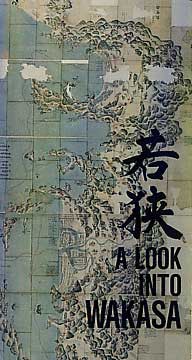
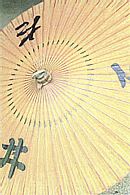
|
The Wakasa Bay is one of the most
scenic stretches of coastin Japan. The peaceful bay is
surrounded by inlets and cliffs on one side and a stretch
of mountains on the other. There are manybeautiful sites
along the Wakasa Bay. but more importantly, there are
rnany National treasures, designated by the Government,tucked
away within the mountains of this secluded area.
Wakasa is a very old district. The Wakasa area was
founded at the sarne time as Nara and the two cities share a great
deal of history. During the Nara period (710-794) many Shingon or
eso teric Buddhist temples were established in Wakasa. The
images
in these temples, many of which are National treasures
survived quite well through the years because the Wakasa people
valued therm greatly. Historically, Wakasa people have been
known to have strong religious beliefs. They protected their
temples from
fire and war, they even protected their temples before
their own houses!
The route from Wakasa to Kyoto along Lake Biwa has been used since the Nara period for taking fish and salt to
Nara. The route developed into a larger trading district when Obama become an important city in the 1600's. Under the feudal
lord Sakai, an underlord to leyasu Tokugawa, Obama and the
Wakasa area flourished as a port city. ln 1869, the Meijj
government
established the Wakasa area as part of the Fukui prefecture.
Today Wakasa is a quiet place surrounded by nature. Its
curious temples, serene coastline and wealth of history
are sure to inspire and enchant. |
|
GETTNG TO WAKASA BAY
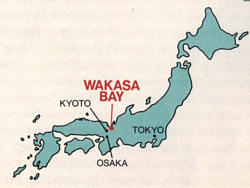

|
The oldest approach to
Wakasa is on the Saba Kaido or
Mackerel Road. This route was heavily traveled by merchants bringing fish and salt from the ocean ports of Wakasa to
Nara and later to Kyoto.
Today, you can take the JR Kosei Line frorn Kyoto that
spans the length of Lake Biwa. At Omi lrnazu change to the JR
bus headed for Obama. Another approach is via Tsuruga in
Fukui prefecture or Maizuru in Kyoto prefecture. The train that
runs between these two cities is called the &quatObama
line&quat.
Traveling to major attractions can be done by train or
bus, but a car can be convenient for exploring the ocean side
peninsular and mountain regions.
|
The Name Wakasa
The name Wakasa has two different
meanings, according to local stories. Thefirst meaning cornes from a Korean word. Since the Koreans often used
this area as a port for their travels to Japan or China,
they often referred to it as the "crossroads"
or Wakasa in Korean. This is one derivation of the name.
The second story has another theory. ln ancient times the
ruler of Wakasa, Kashi Wade no Omi, went to an lmperial
party in Nara. All of the rulers were drinking sake
together on a riverboat. Suddenly, cherry blossom petals
fell into Kashi Wade no Omi's sake cup. The Emperor was
quite astonished that this had happened because it was
fall, not spring. The Emperor told Kashi Wade no Omi that
because of this occurrence he must change his narne.
Wakasakura, the Emperor said, symbolized &quatWake&quat
or youth because the blossorns fell very early in the
year and "sakura", of course, for the cherry
blossoms. |
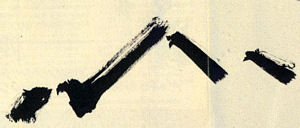
Statues of Jizo,Tentokuii Temple
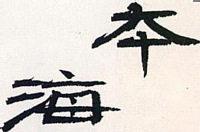 
|
GETTING AROUND
WAKAKASA
One, of the charms of Wakasa Bay is
that despite the fact that it is a large area, the JR
trains and buses make it easy to reach most of the
interesting sites. ln addition, rental bicycles are
available in front of Obama and East Obama stations.
A short bus tour of the temples that surround Obama is
also available, with two departures daily from March to
November from Obama station. These tours, however are
only offered in Japanese.
Bus lines that are convenient from Obama station are the
Natasho line, the Omi lmazu line, the Nishizu line and he
Fukutetsu bus-Mikata line.
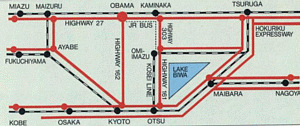
|
ACCOMMODATlONS
There are dozens of ryokan,minsyuku
and hotels from which to choose.Prices very,depending on
the type of accommodation, but regardless of where one
says, one will discover the warm hospitality of Wakasa.
Many outstanding traditional Japanese inns can be found
through out the area. Here guests can enjoy the best of
Wakasa's regional cuisine, skillfully prepared, while
also relaxing in an atmosphere of elegance.
Located next door is an inexpensive Kokurnin Shukusha (People's
Lodge). For a list of ryokan, minshuku and hotels please
contact the Tourist lnformation Center Obama, (0770) 53-1111.
|
|
ln many caces it is quicker to take a
taxi sincethe walking distances are quite far.There are
also fishing equipment rental services available.Ask at
the Obama station for information on rental boats,trips
and prices.Please check the information center at the
Obama station for walking maps and other infomation in
English. |
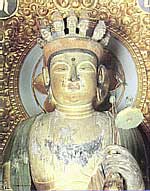 |
CUISINE
The Wakasa
Bay has been known for its fresh fish since early
Japaneshistory and the beghnings of the Saba Kaido or
Mackerel Road. The following dishes are very popular in
Wakasa. |
TRADITIONALCRAFTS
The Wakasa bay is home to many long
traditions that have been passd down from generation to
generation. One of the oldest is the carvincl of agate. A
Korean tribe, called Wani, brought this skill to Wakasa
in the 8th century. At that time the Wani tribe worshipped the agate and built the Hiko Hime shrine to
honor it. Today. rings, necklaces. and other accessories
are made and sold in Obama.
Perhaps the most famous craft in Wakasa is the
lacquerware.
|
|
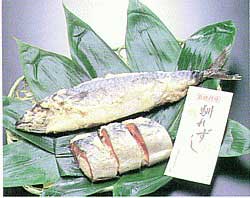 Narezushi A kind of sushi seasoned by fermented mackerel
instead of vinegar. This sushi is probably a result of
the Mackerel Road trade. Narezushi A kind of sushi seasoned by fermented mackerel
instead of vinegar. This sushi is probably a result of
the Mackerel Road trade.
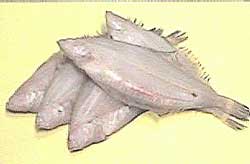 WakasaKareI This is a very thin flat fish. The fish are
hung outsidetb dry for many days. WakasaKareI This is a very thin flat fish. The fish are
hung outsidetb dry for many days.
Blow Fish Very popular, yet expensive. Takahama is knowvn
for its blow fish.
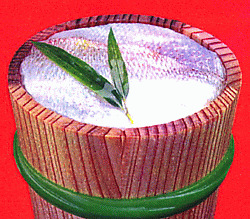 Sasazuke A type of sushi made from fillets of sea bream
pickled with Sasazuke A type of sushi made from fillets of sea bream
pickled with
vinegar.
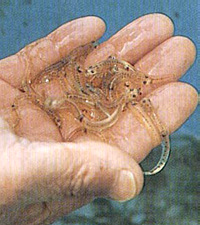 Isaza A small transparent fish. lt is caught in the
rivers in spring and Isaza A small transparent fish. lt is caught in the
rivers in spring and
usually eaten arive.
Jinenjo
Soba Natasho, a mountain
ous area in Wakasa, makes a very interesthg kind of soba
or buck wheat noodles. The soba is called Jinenjo Soba or
soba made from sweet potatoes. This type of soba is
typical of this region. The people of Natasho are very
proud of this soba.
 Kuzurnanju A starch cake made with bean jam filling. You
can see it being made in the summer. Kuzurnanju A starch cake made with bean jam filling. You
can see it being made in the summer.
Decchiyokan A sweet,soft jelly made of azuki beans.
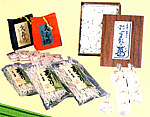 Kumagawa Kuzu
A starch cake that is made from the arrow Kumagawa Kuzu
A starch cake that is made from the arrow
root grown in the moun tains around Kumag awa.
|
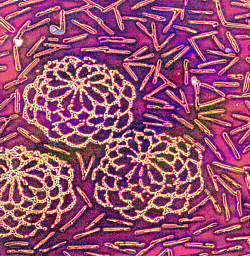 
Wakasa lacquerware is distinct frorn
others because it is colordipped any where from eight to
one hundred times. The different methods used for
grinding the chopsticks determine the pattern and design.
Mother of Pearl and small pieces of egg shell are often
used in the designs. Houses and shops line the streets in
the Nishizu area of Obama. where the lacquerware is
carefully produced one phase at a tirne. Obama is world's
largest producer of Iacquer chopsticks. These chopsticks
are rich in color andhave a wide variety of designs.
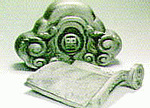
Sueno pottery, which can be found in the Kaminaka area
today.had been produced in Wakasa since the 8th century.
lt is recog nized for its earth toned colors and rustic
appearance.

Washi or Japanese paper is another product with many uses.
Today. Wakasa washi is used for making umbrella's,
Japanese paper dolls. and paper for sliding doors. Wakasa
washi is known for its strength and durability.
The deep color and interesting designs on Wakasa's roof
tiles make them very popular for indoor ornamental
decoration. Their high quality clay keeps from breaking
in the cold winter snow so they are highly prized.
|
|
lNANDAROUNDTHE WAKASABAY

|
The Wakasa area is the perfect place
to turn a day ofvisiting temples into a beach vacation.
Spend the night by the ocean at a minshuku and sample
some of Wakasa's culinary delights. Visit Seiwa Chopstick
Factory where you can try your hand at making chopsticks
from Wakasa lacquer, an experience not to be missed. Take
the boat from Fisherman's Wharf to Sotomo and see the
cliffs and
waterfalls there. Visit the Wakasa History Museum and
make paper at Wakasa Washi no le which is across the
street. Plan a fishing trip and spend the day on a small
deserted island. Below is a map and diagram showing the
major attractions of the Wakasa Bay.
|
HAND,S ON
lf you are interested in
tryng your hand at these traditional crafts please visit the shops. |
Seiwa Make your owm chop sticks. The
store itsetf sells ovef 300 dlflerent types. A 5 minute
walk from East Obama staition on the way to Jinguji and
Mantokujj. Opell every day frorn 9:00-5:0. (0770) 56 -0884.
 Tsukamoto
Mingei Center. Make you own lacquer dar urna The fee is \500.
From mama station take the JR bus headed to Nishizu. Get
off at the. Fukutani bus stop. Tsukamoto
Mingei Center. Make you own lacquer dar urna The fee is \500.
From mama station take the JR bus headed to Nishizu. Get
off at the. Fukutani bus stop.
Open everyday frorn 8:00-7: 00. (0770) 52-2590.
Wakasa Washi no le Make your own Japanese paper. The fee
is \500. A IO minute
walk from the Wakasa History Museum. For over 10 people
please make reservations.Open everyday from 9:00-6:00. (0770)
56-0363,
Suebo Sosakukan. Make your own Sueno pottery. Take the
Fukutetsu bus frorn the
Kaminaka station. Get off at the Sueno bus atop. The days
and hours vary so please call in advance. (0776) 82-0594, |